Click the Camry hybrid for a high res gallery
Automotive desirability is a strange thing. If you ask any statistically significant number of people to choose any car they desired, surely a large number of them would name Ferraris, Lamborghinis, Aston Martins or some other exotic breed. And yet these cars sell in only the low tens of thousands annually world wide. Surely a car that sells over 400,000 units every single year must also have some degree of desirability. No doubt it does, but there is a difference. The exotic appeals to the most basic animal instincts in the reptilian brain. The Toyota Camry appeals to the rational, logical brain that looks for durable, reliable, affordable personal transportation. Its about desiring the things you want vs. the things you need.
The Camry has been the best-selling car in the United States for the past decade. Even with an eight percent drop in a miserable 2008, Toyota still found buyers for 436,617 examples. Globally, Toyota sold 52,479 hybrid Camrys last year most of which went to North American buyers. One way to sell nearly half a million units of any car is by creating something that doesn't turn people off. Read on after the jump to find out if the Camry hybrid has anything to turn buyers on.
Photos Copyright ©2009 Sam Abuelsamid / Weblogs, Inc.
Referring to the Camry's looks as stylish is a stretch. The Toyota Camry could almost be described as rolling camouflage. This is most definitely not one of those polarizing designs, like the Chrysler 300, that people love or hate. Instead, its appearance is so innocuous as to be almost invisible. That's not to say it's bad, it simply doesn't attract any significant attention. The proportions are fine, and better than the last generation or two, with reasonable overhangs and pleasant enough detailing. The relationship of the wheel wells to the rest of the body doesn't leave the car looking tipsy or bloated. The sloping rear roof-line and short rear deck means the Camry looks neither too formal or too sporty.
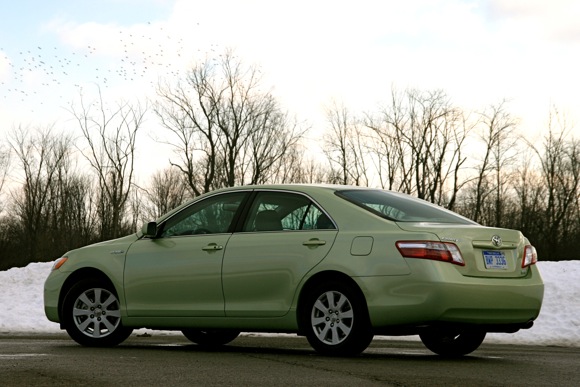
In hybrid form, the Camry lacks the fog-lights of the upper trim levels, leaving the nose clean and simple. Ridges along either side of the hood rise up above the fenders a bit giving the Camry a bit more character than previous generations for those that look closely but not enough that most people would notice. As its sales figures attest, most drivers don't really seem to care what a car looks like as long is it doesn't offend and the car works well.
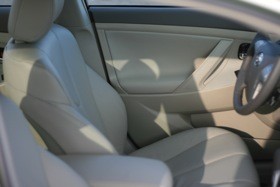
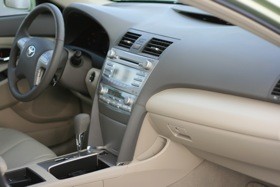
The seats in our test example were wrapped in a tan-colored leather that matched the lower part portion of the instrument and door panels. Like the exterior, the two tone dashboard is clean and uncluttered. The materials in this example were soft to the touch and seemed to be of reasonably high quality, perhaps not on the same level we've come to expect of contemporary Volkswagens, for example, but again nothing likely to elicit complaints.
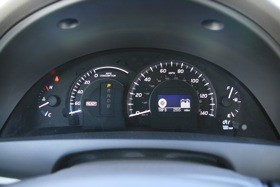
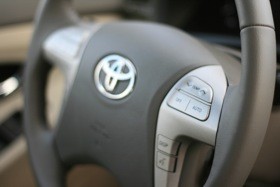
Unlike many contemporary luxury cars, the center stack is not cluttered with a plethora of buttons and switches. That's partly due to a relative lack of features that are more and more being installed in new cars. The test example lacked the optional navigation system or other gadgets like a rear camera, parking assist or 63 way seat adjustments. There were heaters for the seats, satellite radio and automatic dual zone climate control. The seats were reasonably comfortable but not as supportive as the seats in the Fusion.
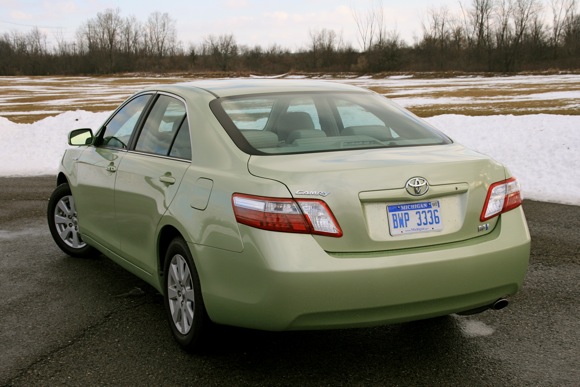
The rear seat area offers plenty of room for two adults and three on occasion. Leg and head room were both plentiful. However, like most other hybrid sedans, the rear seat-back is fixed in place limiting the utility somewhat. The battery actually takes up quite a lot trunk space cutting the regular Camry's 15 cu ft down to about 10. The rear package shelf inside the car is also dominated by an air intake duct that runs cooling air to the battery.
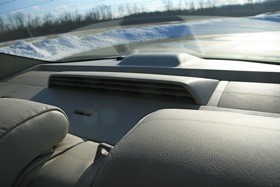
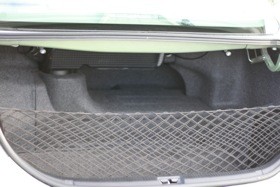
The result of pressing the start button behind the steering wheel depends in part on the ambient temperature. When temps drop below about 30 degrees, the engine fires right up and runs until the battery warms up. When the weather gets milder, as it did during a good portion of the week that we drove the Camry, the starts are generally silent until you put the transmission in Drive and move off.
The 2.4L four cylinder engine is generally quiet and smooth running under most conditions but, as would be expected, it wasn't up to the quiet standard of the Lexus. As a result it was generally easy to tell when the engine was running or not. At cold temperatures, the engine ran most of the time although it would generally stop at idle. The stops and starts were not as smooth as the GS450 or the Escape hybrid, but better than the Chevy Malibu mild hybrid.
When we drove the 2010 Ford Fusion in December, there were some some non-hybrid four and six cylinder Camrys brought along for comparison against the similarly equipped Fusions. Dynamically, the Toyota was simply not in the same class as the Ford. The steering was over-boosted and lifeless, completely lacking in feedback. Those conventional models use a traditional engine driven hydraulic power assist for the steering.
Fortunately, the hybrid uses an electrically assisted power steering system which Toyota would do well to apply across the board on all Camrys. The difference is startling. The weighting of the steering effort is still a bit on the light side for my tastes but definitely far better than the examples we drove in California. Going around corners there was even some steering feedback relating the cornering effort to the resistance in the steering wheel. Hopefully, the new 2010 Prius benefits from some of the same calibrations because the 2009 model has among the worst steering feel I've experienced in many years despite having a similar steering system.
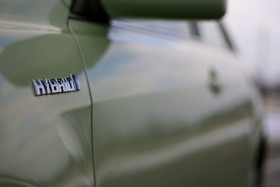
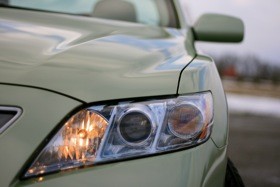
The mid-February thaw that arrived while we had the Camry also triggers the collapse of pavement around these parts, putting any car's suspension to a severe torture test. The Camry has a pleasant balance of spring and damping rates. It absorbs the bumps and craters without shuddering the whole body or feeling floaty. It could do with a bit more roll control however, as the body did tend to lean a bit more than necessary when going around corners. Most drivers however are unlikely to be bothered by this.
While the GS450h shift gate featured a manual tap-shift function when moved past Drive, the last gate in the Camry is labeled with a B. This is the engine braking mode which simulates putting the car in low gear when lifting off the accelerator. Instead of a lower gear, the engine braking mode amplifies the amount of regenerative braking when lifting off.
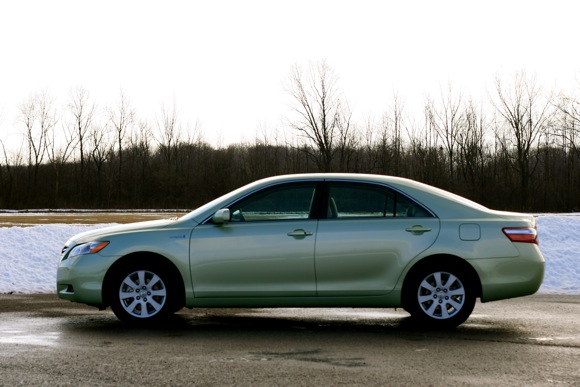
Since our test car didn't have the navigation system, hybrid system feedback was limited to a small LCD display in the bottom of the speedometer as well as an instantaneous mpg gauge where the tach would normally be on the left side of the cluster. The display can be toggled among various options including a small power flow readout, average mileage, temperature etc. When the average mileage for the current trip tops 30 mpg the outer ring of the speedometer begins to glow blue giving some extra feedback to the driver. Hypermilers will definitely prefer the customizable SmartGauge on the Fusion and Milan hybrids with its plethora of instantly available information.
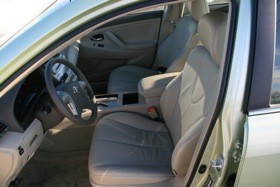
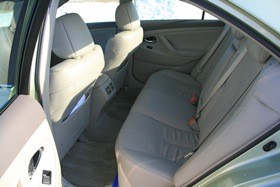
Speaking of mileage, the Camry was a bit disappointing with an average for the whole week just topping 29 mpg, a bit shy of the EPA's estimate of 33/34 mpg city/highway. While this is actually quite good for a roomy mid-size sedan, it doesn't come close to the 43 mpg we got on our first drive of the Fusion hybrid. However, the conditions were also quite different with temperatures varying between 15 and 55 degrees over the course of the week. Cold temperatures definitely don't bring out the best in hybrids, cutting the mileage by about 4-5 mpg over the same drive route to my office.
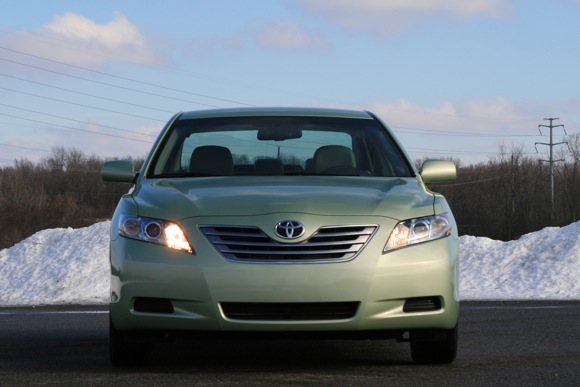
Our time with the Camry consisted of about 85 percent urban driving and I made a concerted effort to maximize efficiency, keeping a close eye on the mpg gauge and the power flow gauge almost to the detriment of safety. Frankly, I find efforts at hypermiling to be both distracting and annoying and generally not worth the effort to pick up maybe 1 mpg compared to simply driving in a sensible manner.
Overall, though, the Camry hybrid was pleasantly surprising. Dynamically I found it superior to previous non-hybrid examples I've driven if still short of outright sporting feel. The car is very well executed but not exciting. Since most drivers are apparently not looking for excitement, they probably won't be disappointed. At a base price of $26,150 the Camry is about $1,000 less than the Fusion but it's also no longer eligible for the federal tax credits that Fusion buyers can get. It also lacks the nifty SmartGauge to help coach drivers to be more efficient. As tested, our Camry came in at $30,797. Next up we'll be looking at the 2010 Mercury Milan hybrid.
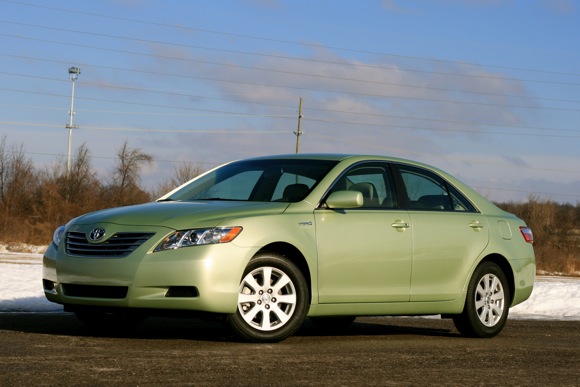
Photos Copyright ©2009 Sam Abuelsamid / Weblogs, Inc.
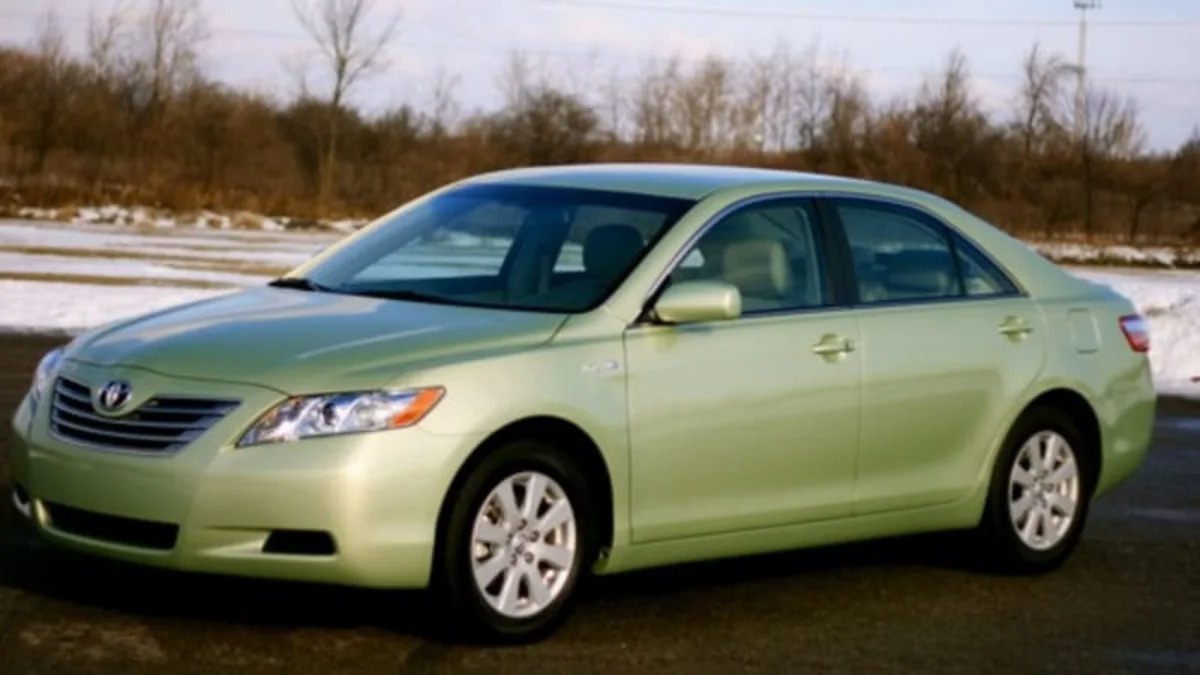

Sign in to post
Please sign in to leave a comment.
Continue